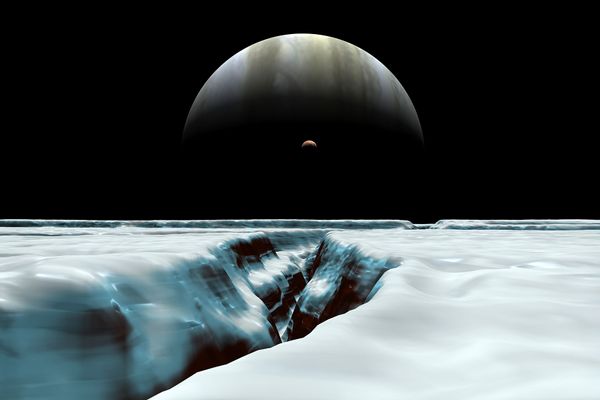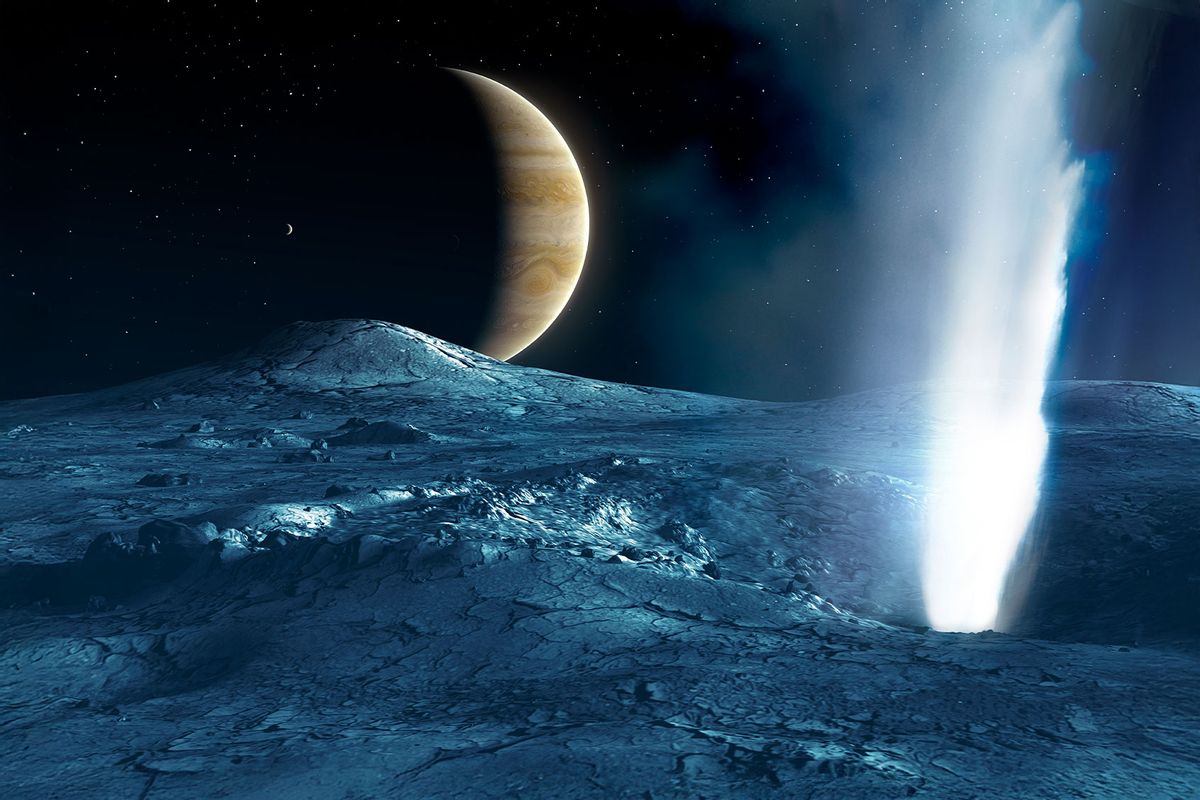The universe is full of icy worlds that scientists suspect could serve as homes for alien life. These celestial bodies are so cold that humans could never set foot upon them without freezing to death — yet if they have liquid water and carbon, they could facilitate the evolution of organic beings like the inhabitants of our own planet. In addition to containing organic chemicals, these worlds would need to be stable enough that life could realistically reside there. That is why astrobiologists are increasingly turning their eyes toward icy bodies like the Jovian moons of Europa and Ganymede, Saturn’s moons Titan and Enceladus, Uranus' moon Miranda and the dwarf planet Ceres.
So how could life survive in such a cold, hostile environment? We’ve found plenty of ice in our solar system, but no consistent liquid water is known on any moon or planetary surface aside from Earth. But many theories exist that subsurface oceans could exist, which is why NASA has launched the Europa Clipper last October, which will hunt for signs of life on Jupiter’s moon when it arrives in 2030. In the meantime, scientists are still puzzling out the physics behind such an icy ocean that could harbor life.
Researchers from Texas A & M University and the University of Washington, Seattle recently published a study in the journal Nature Communications proposing a new concept: the “cenotectic,” or the absolute lowest temperature at which a liquid remains stable under varying pressures and concentrations. The term comes from the Greek meaning “universal-melt.” By applying cenotectic physics to known conditions on various distant worlds, the researchers ascertained how water on these icy distant bodies could remain liquid enough to sustain life.
"Europa contains twice the amount of liquid water compared to all the oceans on Earth combined."
“This low-temperature limit, called the cenotectic, helps us to constrain the conditions under which liquid water — often considered a prerequisite for habitability — might exist on distant worlds,” study co-author Matthew Powell-Palm, an assistant professor of mechanical engineering at Texas A & M, told Salon.
Those limits mostly include water being frozen and therefore unable to support life; the cenotectic takes into account thermodynamic forces like pressure and chemical activity that can keep water in its liquid state despite the extremely low temperatures on icy worlds.
According to the study authors, "the cenotectic plays a central role in the 'endgame' of planetary oceans. As large water-rich planetary bodies cool over geologic timescales or with loss of internal heating such as tidal dissipation or radiogenic heating, their oceans will gradually freeze from top to bottom, until complete solidification is achieved. This effect is particularly interesting in the case of large icy moons like Ganymede, Callisto, and Titan, but also for cold ocean exoplanets like Trappist 1e-g and water-rich rogue exoplanets."
The authors speculate in their work about the “fascinating applications” of the cenotectic concept to planetary science, particularly for “icy worlds such as Europa, Enceladus, Titan, Ganymede, Ceres, Pluto, and potentially moons of Uranus Ariel, Umbriel, Titania and Oberon.” For instance, “by measuring the cenotectic of various water-salt solutions that may capture some of the chemistry of Europa's oceans, we can identify the lowest temperature at which these solutions will remain liquid, and the according pressure and salt concentrations required for this liquidity,” Powell-Palm said. “Thus, by conceptualizing and measuring the cenotectic, we can constrain the most extreme temperature-pressure conditions under which liquid water might exist” and tie that into other possible variables like gravity or the depth of liquid under a world’s icy and crusty surface.
Want more health and science stories in your inbox? Subscribe to Salon's weekly newsletter Lab Notes.
As another co-author explained to Salon, some of these locations contain so much water that astrobiologists will need a tool for figuring out where and how those worlds contain liquid water on which organic molecules can turn into organisms.
“One of the most significant discoveries in planetary science and astrophysics over the past decade has been the realization that icy moons hold the largest reservoir of liquid water in our solar system,” Baptiste Journaux, research professor of Earth and Space Science at the University of Washington - Seattle, said. “For instance, Europa contains twice the amount of liquid water compared to all the oceans on Earth combined, while Titan and Ganymede are likely to contain over 10 times more liquid water each. Additionally, ocean exoplanets are believed to possess the largest reservoir of liquid water in the entire universe.”
 Horizon of the icy moon of Europa (Getty Images/Stocktrek Images)“These icy moons serve as our most promising targets for exploring the possibility of habitability, surpassing even Mars in my opinion,” Journaux added. He hopes that future scientists will be able to use their research after acquiring data from Europa, Ganymede and Titan as a result of impending exploration missions including NASA’s Europa Clipper, ESA’s Juice, and NASA’s Dragonfly. Until that happens, Earth-bound scientists will need to further flesh out the theoretical framework behind the cenotectic.
Horizon of the icy moon of Europa (Getty Images/Stocktrek Images)“These icy moons serve as our most promising targets for exploring the possibility of habitability, surpassing even Mars in my opinion,” Journaux added. He hopes that future scientists will be able to use their research after acquiring data from Europa, Ganymede and Titan as a result of impending exploration missions including NASA’s Europa Clipper, ESA’s Juice, and NASA’s Dragonfly. Until that happens, Earth-bound scientists will need to further flesh out the theoretical framework behind the cenotectic.
“While we think the cenotectic concept and our initial measurements are very exciting, we've only scratched the tip of the iceberg,” Powell-Palm said, apologizing for the pun. “In this study, we measure this cenotectic limit for simple aqueous chemistries (water + one salt), but more complicated solutions with many different salts (not to mention organic compounds that may be present) may behave differently, and may better represent the chemical complexity of the oceans of icy worlds.”
Scientists will also need to learn about the numerous new hydrate materials (solid compounds that include both salt molecules and water molecules, bound together) which will be found on these foreign worlds, as the researchers encountered many while working on their own study.
We need your help to stay independent
“The role of these materials in prescribing the limits of liquid stability further complicates the story, and the very existence of these materials tells us we have a ton of exciting exploration left to do in the low temperature/high pressure parameter space relevant to icy worlds,” Powell-Palm said.
As that new information comes in, Journaux is excited about the possibilities of applying the concept of the cenotectic to helping people discover life.
“This is where the groundbreaking discovery and definition of the cenotectic play a crucial role,” Journaux said. “By providing an absolute limit to the existence of liquid water, including at high pressures and high salinities, cenotectic research enables us to establish an absolute limit on the presence of oceans and potentially habitable environments.”



Shares